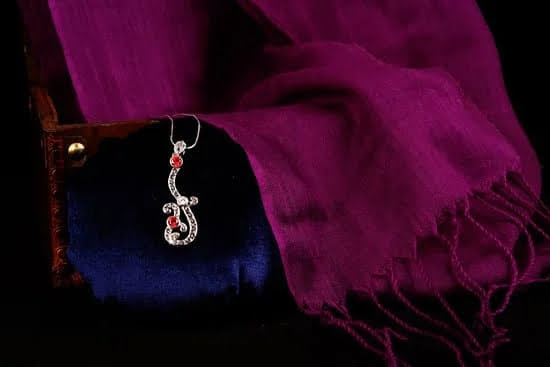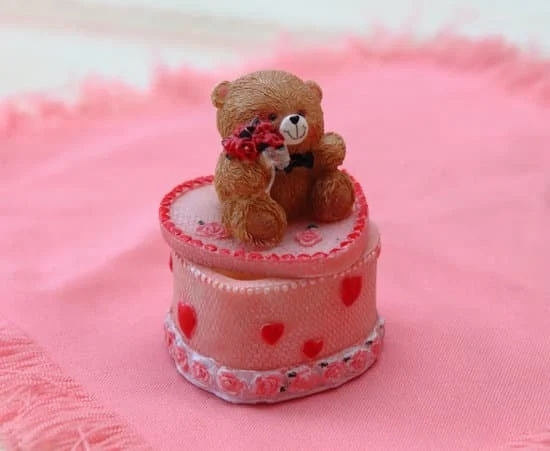Introduction
Vintage jewelry can be described as pieces of jewelry made between the 1920’s to 1980’s. Vintage jewelry encompasses many different trends and styles from this period, from classic gems featuring art deco designs, to colorful statement pieces associated with the swinging ‘60s. Although the term vintage is now widely used to describe those pieces of jewelry, they were not initially categorized as such until a recent resurgence in their popularity in the past few decades.
Common trends and styles that emerged during this period included Art Deco designs, often pairing platinum and gold with geometric shapes adorned with diamonds or gemstones; statement necklaces featuring elements like big plastic beads; clunky and eye-catching costume jewelry made from materials like Bakelite, brass and crystal; rhinestone jewels popularized by brands like Julia Gabrielle; bold animal brooches made using various metals and stones; Art Nuevo works featuring modernist lines of silver typically enhanced by colored enamels; chunky charm bracelets often set with semi-precious stones such as amethyst, lapis lazuli, turquoise and lazure coral; brightly colored pendant earrings shaped like flowers or birds; as well as swirls of love knot rings usually set with opals.
Identifying Genuine Pieces
To tell if a piece of jewelry is vintage or not, it’s important to pay close attention to the material it is made from. If a piece appears to be too heavy when examined or has obvious signs of wear, it most likely is from an earlier era. Vintage jewelry styles typically feature metals such as silver, gold, copper and brass. Finishes can vary depending on the time period, but you may find rhodium plated pieces which were popular in the 1920s, or patinated metal finishes as used in Art Deco pieces from the 1930s. Vintage earrings usually have screw-on backings so that the posts do not wear off easily; similarly older brooches are often c-clasped to keep them securely fastened. In the 1940s and 1950s, many pieces featured clip-on fastenings or adjusting pins rather than pierced clasps. Examining these types of details is a great way to determine a piece’s age and worth.
Exploring Signature Styles
When exploring vintage jewelry, it is important to learn about the different eras and styles of jewelry that were popular at that time. Specific hallmarks or markings on vintage pieces will often give clues as to when and where a piece was made, which can be invaluable information when researching certain designers, pieces, or periods of history. To help identify vintage jewelry, research the signature design elements used by specific brands and the types of materials used in those eras.
For example, Art Deco jewelry from the 1920s was often designed with geometric patterns and comprised of materials such as gold, silver, platinum and diamond accents. Additionally, this type of jewelry featured elements such as diamonds arranged in triangles or squares; semi-precious stones like lapis lazuli set in jade or ivory; colored glass set into sterling silver; shapes such as pyramids and sunbursts; Art Nouveau naturalistic themes like flowers, plants, and insects; geometric designs that suggest travel through time or space; and asymmetrical abstract compositions inspired by cubism or surrealism. Many Art Deco pieces also feature striking hand engraved details – another clue to its age. Characteristic hallmarks associated with iconic jewelry from this era include distinctive stylized engravings featuring a crescent moon shape below a star surrounded by Scandinavian initials: “AB” for Alton Bjorklund (Norway) or “AEB” for Ales Olof Svenson (Denmark).
Expert appraisers can also help identify vintage pieces if more detailed information is needed. Registering your valuable vintage jewelry will make it easier for authorities to return it should it ever be stolen. This involves photographing each piece clearly showing all its detail points so that an expert appraiser can properly identifying the vintage piece down to its very origin if necessary
Examining Color & Gemstones
When examining vintage jewelry, one of the most important aspects to consider is the type of gemstones and their color. The rarest, and often most valuable stones come in a variety of colors and can hold many different value depending on their quality. The stones may be genuine, lab grown or faux, which can all vary drastically in price. Here are some tips for identifying various types of gemstones used in vintage jewelry:
Diamonds: Diamonds are typically clear and transparent and come in a variety cuts such as brilliant cut (round), emerald cut, etc. A key test to determine if a diamond is real is to hold it up a newspaper or magazine; if you can read the text clearly through the stone then it’s likely authentic.
Rubies: Rubies have deep red hue that’s distinctive from other gemstones like garnet, which usually has a brown tint mixed with its distinctive red color. Synthetic rubies also exist but lack the desired clarity of an authentic ruby. People also often use thin layers of rubies to create multi-colored tones within jewelry designs.
Sapphires: Sapphires come in many colors – not just blue – including pink, yellow and green. Genuine sapphires will often emit a white glow when moved around under direct light while synthetic sapphires do not have this specialized property due to not having sufficient clarity or tonal qualities under light analysis. People also employ heat treatments around lower quality sapphires to produce more desirable colors such as vibrant blues or purples.
Emeralds: Emeralds feature intense green hues incorporating slight blue tints depending on how they were cultivated and polished before being set into jewelry works. It’s common to find imitated versions filled with glass since genuine emeralds are so expensive; these imitations can challenge an experienced eye which requires closer examination under lighting for detection purposes.
Pre-Shopping Tips
Before you rush into a vintage jewelry shop, it’s important to ensure you get the best value for your money and avoid counterfeit items. Here are some tips to help you identify quality pieces:
• Check for hallmarks: Most jewelry made before 1975 carries a maker’s mark or other identifying stamp, helping collectors know the origin of the piece. Look carefully at the markings inside each piece of jewelry, as this can help you determine its maker and origin.
• Do your research: Before buying something, look into its history and compare prices with similar pieces to make sure you’re getting a good deal. Reading up on the types of materials used in vintage jewelry will also help you identify potential counterfeits.
• Bring a magnifying glass: Vintage pieces often have tiny details that need to be examined closely with a loupe or magnifying glass. Checking for irregularities on clasps, settings, prongs and stones is an important step in helping to authenticate an item’s age and established its value. Additionally, looking for signs of wear can provide insight into its past owners.
• Quiz the seller: Ask questions about the item’s age, provenance and condition before making any commitments. Reputable dealers should be able provide helpful information about why the piece is being offered for sale and what unique characteristics set it apart from contemporary designs. If you trust their opinion then purchase away!
Heightened Joys of Collecting
Telling vintage jewelry can be an exciting and rewarding experience. Collecting vintage jewelry is becoming increasingly popular as it has a unique charm that cannot be found in modern pieces. There are several considerations when determining the age of a piece, including metalwork, stamps, stones, design elements and workmanship. Metals such as brass, copper and pot metals can typically be described as vintage for items more than 100 years old. Other clues may come from examining stamps with manufacturer’s name and patina looking for wear and tear on the piece. Stones may also provide insight as to whether an item is vintage as certain gemstones became fashionable during certain eras of history. Design elements can point to certain eras such as Art Deco designs being popular in the 1920s or Retro designs of the 1940s-50s. Lastly look at the craftsmanship itself which should show superior quality of the handmade pieces associated with vintage pieces rather than those made by modern machines where attention to detail is often lacking. When you are able to accurately identify vintage pieces there is unparalleled joy in owning them. With all these tips one should have no problem spotting unique authentic vintage jewelry!
Conclusion
Collecting vintage jewelry has many benefits. Not only does it provide a unique way to express yourself and your personal style, but it can also appreciate significantly in value over time. Vintage pieces are one-of-a-kind items that often have a story or special meaning behind them. They can be passed down from generation to generation, allowing family members to bond through a shared heirloom. Collecting vintage jewelry is an exciting hobby filled with beautiful pieces of history that you can admire and cherish for years to come.

Welcome to my jewelry blog! My name is Sarah and I am the owner of this blog.
I love making jewelry and sharing my creations with others.
So whether you’re someone who loves wearing jewelry yourself or simply enjoys learning about it, be sure to check out my blog for insightful posts on everything related to this exciting topic!





